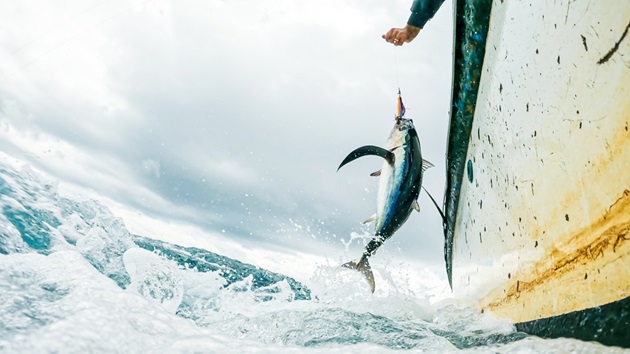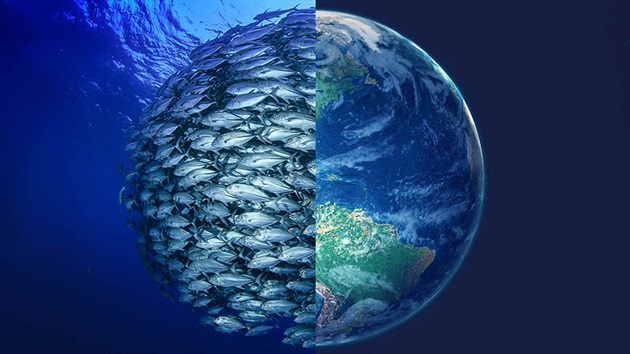Australian teaching resources that are all about tuna and sustainable fishing. Lesson plans are aligned with Version 9 of the ACARA Australian Curriculum.
Celebrating Momentum
On World Tuna Day 2025 over half (54%) of wild caught tuna around the world is now MSC certified (up from 33% a year ago).
Only 2% of global tuna stocks are considered overfished (down from 13% in 2024), according to the International Seafood Sustainability Foundation.
Thank you, Fishers
In Case Study 1 of this lesson, students will learn about sustainable tuna fishing in Australia with resources including:
- A short video about an MSC-certified tuna fishery
- Tuna factsheet
- Tuna fisher profiles
Students will learn about the methods that Australian tuna fishers use to reduce bycatch and improve their sustainability, such as putting coloured flags on their fishing lines.
Tuna Kahoot! Quiz
Tuna Facts
What are the main species of tuna - and how sustainable are they to eat?
Read about the types of tuna we see in Australia, the myth of 'dolphin-friendly' labels, and a story from the PNA Tuna Fishery in Papua New Guinea.
Student Q&A with Tuna Australia
In this video, Laura Wells meets with Phil Ravanello, Program Manager at Tuna Australia and Grant Logue, Owner of Harley & John's Seafood.
They talk about the journey of a tuna from the boat to the shop, including questions like How big are tuna, how are they caught, and how do they become a fillet of fish?
World Tuna Day
World Tuna Day is celebrated each year on 2 May - a date officially recognised by the United Nations in 2016.
Tuna plays a vital role in food security, economic development, and the livelihoods of fishing communities. However, some tuna populations face challenges like overfishing, bycatch, and habitat loss.
It's the perfect occasion to learn about these fin-tastic fish and ask: How sustainable are the tuna we eat in Australia?
Around the World...
In this short film, the fishery shares their journey towards sustainability. Learn why fish aggregating devices (FADs) are controversial, and how the fishery has worked to improve their methods.
Aotearoa New Zealand
Read about the untold story of Kiwi fishers at Talley's, Westport catching albacore tuna with pole and line:
“We use two poles on either side of the boat, each with five hand lines. Every fish is caught one at a time, unhooked, and placed straight on ice. It’s simple, sustainable, and quite fun,” he says.
Sign up for teacher updates
Each quarter, we'll feature the latest education resources, upcoming calendar dates, competitions and the very best ocean-related stories.





.tmb-labelhome.jpg?Status=Master&Culture=en-AU&sfvrsn=a7d6dbd3_1)





